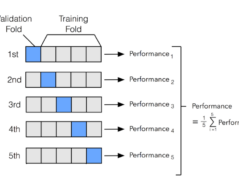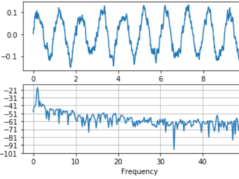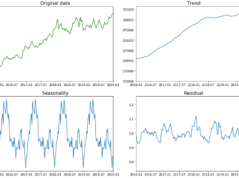Exchange Traded Fund (ETF) Definition
An exchange traded fund (ETF) similar to mutual fund that is listed and traded on a stock exchange in that they represent pools of assets, such as stocks or bonds. However, ETFs can be bought and sold throughout the day like individual stocks, which makes them more flexible than traditional mutual funds.
ETFs have become increasingly popular in recent years, thanks in part to their low costs and tax efficiency. They also offer investors a way to gain exposure to a broad range of assets, including stocks, bonds, commodities, and currencies.
The net asset value (NAV) of an ETF is the market value of the underlying assets minus the liabilities. This figure is used to calculate the price of an ETF share on the stock exchange.
The first ETF of India was Nippon India ETF Nifty BeES.
Types of ETFs
Various types of ETFs are available to investors that can be used for income generation, speculation, and price increases, and to hedge or partly offset risk in an investor’s portfolio. Here is a brief description of some of the ETFs available on the market today.
Passive and actively managed ETFs
Passive and active ETFs are two types of exchange-traded funds. An ETF is a security that tracks an index, a group of assets, or a set of securities. Passive ETFs track an index, while active ETFs do not. Active ETFs are managed by a professional money manager, while passive ETFs are not.
Passive ETFs have lower fees than active ETFs. This is because passive ETFs do not require a money manager, who charges a fee for their services. Passive ETFs also tend to be more tax efficient than active ETFs. This is because they buy and sell fewer securities, which can limit the amount of capital gains taxes paid by investors. Active ETFs can provide investors with access to strategies that they cannot get with passive funds.
Bond ETFs
ETFs provide a way to invest in bonds without having to buy and store individual bonds. This can be helpful, especially for investors who don't have a lot of money to invest or who want to spread their risk by investing in several different types of bonds.
There are many different bond ETFs available, so it's important to do your research before choosing one. Some ETFs focus on government bonds, while others invest in corporate or municipal bonds. There are also ETFs that specialize in certain parts of the bond market, such as high-yield or international bonds.
Be sure to consider the fees associated with each ETF before making a decision. Some ETFs have higher fees than others, and those fees can eat into your profits over time.
Stock ETFs
When most people think about investing, they think about buying stocks. However, there are other options available, and one of those is exchange traded funds, or ETFs. ETFs are a type of investment that allow you to buy a basket of stocks in one transaction. This can be a great way to invest in a particular sector or industry, without having to purchase all of the individual stocks.
You can find one that suits your needs. If you are looking for exposure to the stock market as a whole, you can invest in a broad market ETF. If you want to focus on a specific sector or industry, there are ETFs available for that as well.
Industry/Sector ETFs
Industry sector ETFs are a type of exchange-traded fund that tracks the performance of a particular industry or sector. This can be helpful for investors who want to focus their portfolio on a specific area of the market.
There are a variety of different industry sector ETFs available, and each one has its own unique set of risks and rewards. It's important to do your research before investing in any industry sector ETF, and to make sure that it aligns with your overall investment strategy.
The price of an industry sector ETF can be volatile, so it's important to keep an eye on it and make sure you're comfortable with the potential swings. However, if you're looking for exposure to a specific industry or sector, an industry sector ETF can be a great option.
Commodity ETFs
Commodity ETFs are a great way to invest in commodities without having to purchase and store physically. These funds allow you to buy into a basket of it, which can be more diversified than investing in a single one. Additionally, they can be bought and sold just like stocks, making them a very liquid investment.
Currency ETFs
Currency ETFs offer investors a convenient way to invest in foreign currencies. These funds give you exposure to a basket of currencies, which can help reduce your risk if the value of any one currency decreases.
There are a number of different currency ETFs available, so it's important to do your research before investing. Some funds focus on major currencies, while others include a mix of more obscure currencies.
The expense ratios for currency ETFs vary, so it's important to compare the fees before making a decision. And remember that currency ETFs are subject to risks just like any other type of investment. So make sure you understand the risks involved before investing.
Inverse ETFs
An inverse exchange-traded fund is a security that rises in price when the underlying stock or other security it is tracking falls in price. Inverse ETFs are designed to provide investors with a way to profit from a decline in the prices of stocks or other securities. They can also be used to hedge against a decline in the price of an individual security.
Leveraged ETFs
Leveraged ETFs are a relatively new investment product that offer traders the ability to magnify their returns, using options and futures. These funds have been growing in popularity in recent years, as more and more traders become familiar with their unique properties.
Leveraged ETFs are designed to provide 2x or 3x the exposure of the underlying index or security. For example, if the S&P 500 is up 2%, a 2x leveraged ETF would be expected to rise 4%. Because of this leverage, these products can be very risky, and should only be used by experienced traders who understand the risks involved.
Despite their risks, leveraged ETFs can be a powerful tool for traders who understand how to use them correctly. By taking advantage of short-term price swings, these funds can generate significant profits in a relatively short period of time.
Advantages and Disadvantages of ETFs / Exchange-Traded Fund
One popular option is ETFs, or exchange traded funds. ETFs offer a number of advantages and disadvantages compared to other investment vehicles.
One advantage of ETFs is that they can be bought and sold throughout the day on an exchange. This allows for more flexibility and liquidity than traditional mutual funds, which can only be traded at the end of the day. Additionally, ETFs often have lower fees than mutual funds.
However, there are also some drawbacks to investing in ETFs. For one, because they trade like stocks, they can be more volatile than traditional mutual funds. Additionally, while ETFs offer a number of investment options, they may not be as diversified as mutual funds.
Investing in ETFs that are Actively Managed
When you buy or sell a stock, you're participating in the active management of a publicly traded company. You're hoping that your actions, as an individual investor, will help the company grow and succeed. The same is true when you invest in actively managed ETFs.
An ETF is a security that tracks an index, like the S&P 500. An actively managed ETF, however, is run by a portfolio manager who chooses which stocks to buy and sell in order to beat the index. This type of investment can be riskier than buying an index fund, but it also offers the potential for higher returns.
Before investing in an actively managed ETF, it's important to understand the risks involved. These funds can be more volatile than traditional index funds, and they often have higher fees. It's also important to carefully research the fund manager and their track record.
Tracking error of exchange-traded fund
One downside to using ETFs is that they can experience tracking error. Tracking error is the difference between the return of the ETF and the return of the underlying index. This can be caused by a variety of factors, including management fees, bid-ask spreads, and taxes. for example - NIFTY 50 Index gained 5% this month. On the other hand, the NAV of an Index Fund that tracks the NIFTY 50 gained 4.5% during the same period. This difference of -0.5% (4.5% – 5%) is the tracking difference of the Index Fund. A negative tracking difference means that the Index Fund has underperformed versus the benchmark. However, the tracking difference of an Index Fund is not always negative. A positive tracking difference means that the Index Fund has outperformed its benchmark.
Stock Portfolio with smallcase
Looking for a portfolio that outperforms the benchmarks? Quantace has you covered – with strategies designed to beat the market, you can relax and let us do the hard work. Check us out today!
Quantitative Portfolios - Proprietary In House Research (quantace.in)
Quantace Research | smallcases
Quantace Research | Bluechip Altius - Balanced (smallcase.com)
Quantace Research | CNX500 Citius - Flexicap Aggressive (smallcase.com)
Quantace Research provides a range of services for investors, from first time investors to those who have been investing their entire lives.
Disclaimer: This information has been collected through secondary research and is only for educational purposes, quantace team is not responsible for any error.






